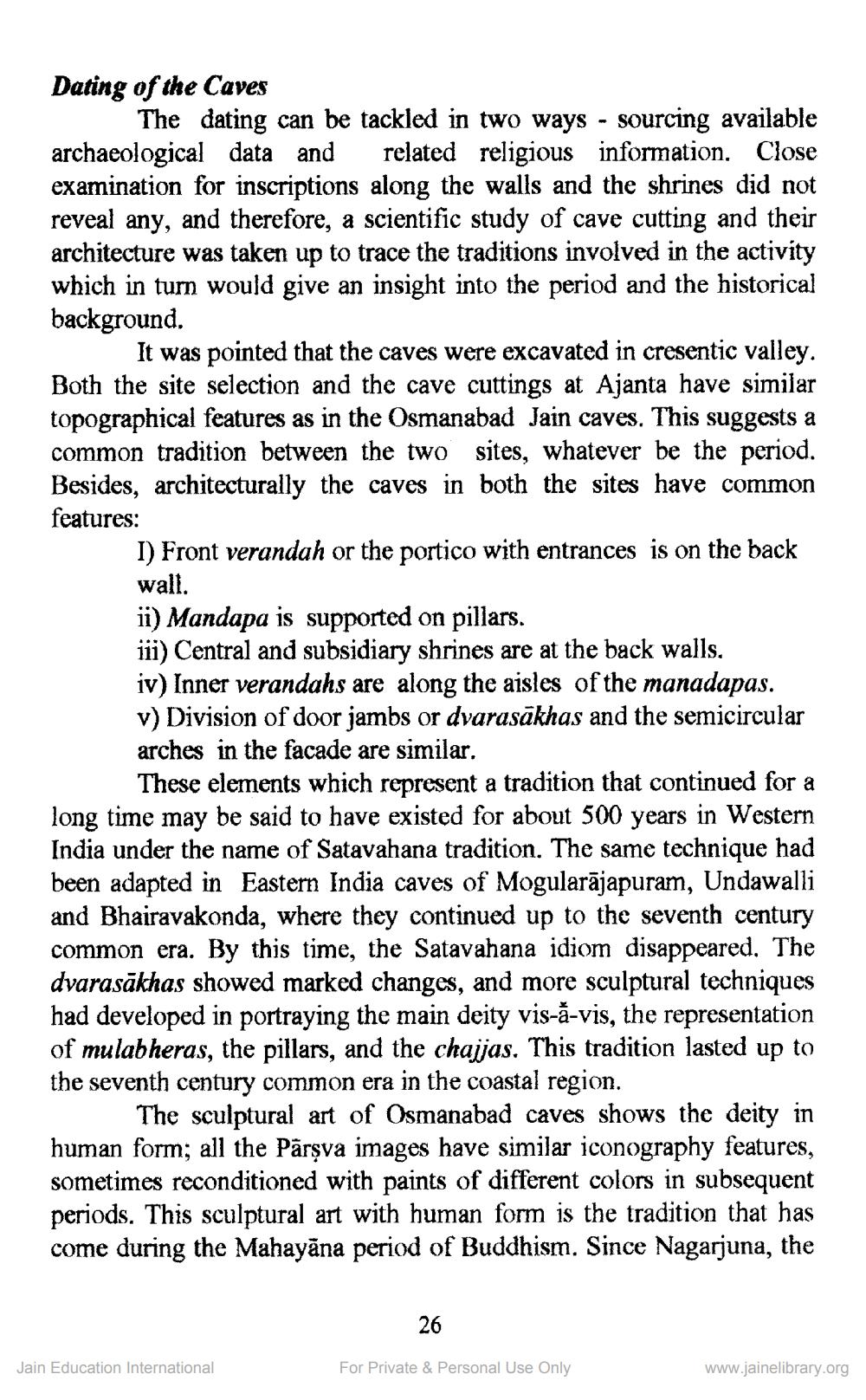________________
Dating of the Caves
The dating can be tackled in two ways - sourcing available archaeological data and related religious information. Close examination for inscriptions along the walls and the shrines did not reveal any, and therefore, a scientific study of cave cutting and their architecture was taken up to trace the traditions involved in the activity which in turn would give an insight into the period and the historical background.
It was pointed that the caves were excavated in cresentic valley. Both the site selection and the cave cuttings at Ajanta have similar topographical features as in the Osmanabad Jain caves. This suggests a common tradition between the two sites, whatever be the period. Besides, architecturally the caves in both the sites have common features:
I) Front verandah or the portico with entrances is on the back wall.
ii) Mandapa is supported on pillars.
iii) Central and subsidiary shrines are at the back walls.
iv) Inner verandahs are along the aisles of the manadapas.
v) Division of door jambs or dvarasākhas and the semicircular arches in the facade are similar.
These elements which represent a tradition that continued for a long time may be said to have existed for about 500 years in Western India under the name of Satavahana tradition. The same technique had been adapted in Eastern India caves of Mogularajapuram, Undawalli and Bhairavakonda, where they continued up to the seventh century common era. By this time, the Satavahana idiom disappeared. The dvarasākhas showed marked changes, and more sculptural techniques had developed in portraying the main deity vis-a-vis, the representation of mulabheras, the pillars, and the chajjas. This tradition lasted up to the seventh century common era in the coastal region.
The sculptural art of Osmanabad caves shows the deity in human form; all the Parsva images have similar iconography features, sometimes reconditioned with paints of different colors in subsequent periods. This sculptural art with human form is the tradition that has come during the Mahayana period of Buddhism. Since Nagarjuna, the
Jain Education International
26
For Private & Personal Use Only
www.jainelibrary.org




